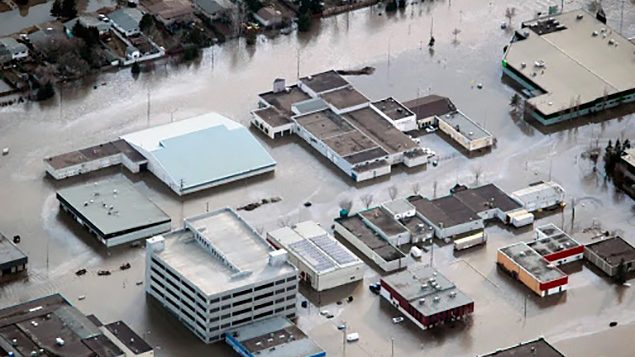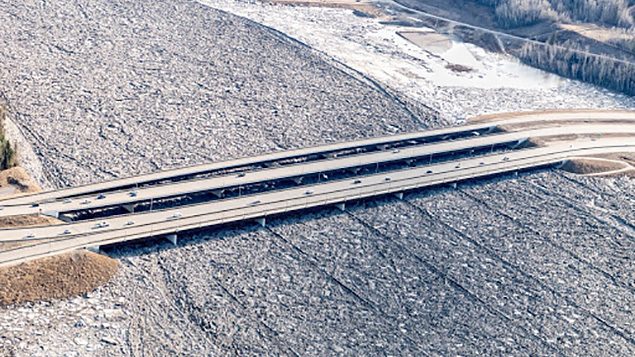It resembles the calm after a storm, but any time you’re dealing with Mother Nature, anything can happen.
Ask anyone in the northern Alberta community of Fort McMurray, scene of a devastating wildfire four years ago.
On Sunday, the town’s latest crisis began after ice on the Athabasca River began breaking apart and eventually jammed, creating a blockage 25 kilometres long.
Prevented from flowing downstream, the river began spilling into town.
By Tuesday morning, thousands of residents had been forced to flee their homes.

Downtown homes and businesses in Fort McMurray were swamped after an ice jam caused flooding in the Athabasca and Clearwater rivers. (McMurray Aviation)
Now, it’s pretty much a waiting–and watching–game.
The province’s environment minister, Jason Nixon, says the crisis will only be resolved when warmer weather melts the massive ice jams.
“Ice-jam floods are very unpredictable and conditions can change quickly with little warning,” Nixon told reporters at a news conference in Edmonton on Tuesday.
“There is no reasonable engineering solution to unlock the ice jams at this point. We have to rely on warm weather to soften the ice.”
That leaves officials in Fort McMurray keeping a close eye on river levels.
Don Scott, mayor of the Regional Municipality of Wood Buffalo, told reporters Tuesday the ice jam had shrunk by two to three kilometres.
But both he and Scott Davis, director of emergency management for the municipality, said it remains a critical situation.
“Unfortunately we are not in the home stretch yet,” Davis told a news conference.

An aerial view of Fort McMurray taken from a helicopter on Monday as flood waters overwhelmed the community. (McMurray Aviation)
Scott, who describes the flooding as the worst in 100 years, said he has met with Alberta Premier Jason Kenney and talked to federal Emergency Preparedness Minister Bill Blair, and both offered to help.
However, the municipality has not asked the province to make a formal request to the federal government.
“We made a large series of asks of the premier,” said Scott. “That included more RCMP support. It includes things like tiger dams, potentially sandbags and other support going forward.”
The city’s entire downtown remains under an evacuation order and more than 5,000 people have registered at two evacuation centres.
Officials say that number will grow because about 12,000 (not 13,000 to 15,000 as previously estimated) people live in the areas being evacuated.
With files from RCI, CBC News (Wallis Snowdon),The Canadian Press







For reasons beyond our control, and for an undetermined period of time, our comment section is now closed. However, our social networks remain open to your contributions.